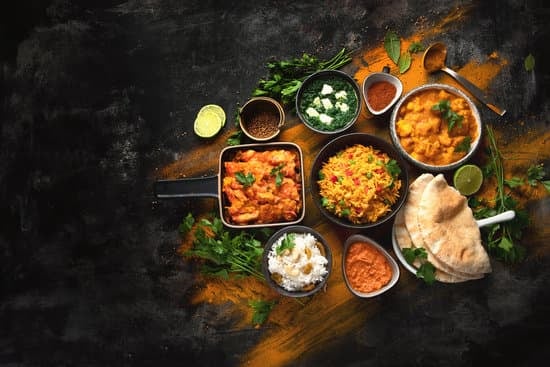Introduction to the concept of global cuisine
Food is more than just fuel; it’s an experience. It tells stories of cultures, traditions, and histories. Every dish has a unique journey that connects us to different corners of the world. Exploring global cuisine opens up a treasure trove of flavors waiting to be discovered.
From the fiery spices of Asia to the hearty comfort foods of Europe, each region brings its own distinctive flair to the table. Our taste buds are like passports, ready for adventure as we savor dishes inspired by age-old practices and vibrant ingredients.
Join me on this culinary voyage where we’ll dive into diverse plates from around the globe. Get ready for an exploration that tantalizes your senses while expanding your palate in ways you never thought possible!
The cultural and historical significance of food
Food is more than sustenance; it’s a narrative of culture and history. Each dish holds stories passed down through generations, reflecting traditions, beliefs, and identities.
In many societies, recipes are sacred symbols of heritage. They capture moments in time—celebrations, rituals, and ceremonies—all wrapped up in flavors and aromas.
Consider how certain foods mark milestones: weddings often feature specific dishes that honor family lineage or regional pride. These culinary customs enrich our understanding of community bonds.
Moreover, food can be an expression of resilience. Throughout history, ingredients have been adapted due to scarcity or availability yet still represent cultural significance.
As we savor each bite from around the globe, we partake in a shared human experience—one that transcends borders and connects us through taste. Embracing diverse cuisines invites us to appreciate the rich tapestry woven by humanity’s culinary journey across time.
A. Asia – flavors of spice and umami
Asia, a continent rich in diversity, offers an array of flavors that excite the palate. The complexity of Asian cuisine lies in its masterful use of spices and umami. From fiery curries to delicate sushi, each dish tells a story.
Think about the aromatic herbs used in Thai cooking: lemongrass, kaffir lime leaves, and galangal come together to create bold tastes. In contrast, Japanese cuisine emphasizes subtlety with soy sauce and miso enriching dishes without overwhelming them.
Street food stalls across Asia showcase local favorites like spicy Szechuan noodles or Vietnamese pho — bowls brimming with flavor yet steeped in tradition. Each bite reflects centuries of cultural exchange and culinary evolution.
It’s not just about taste; it’s also about balance. Whether enjoyed at home or on bustling streets, these flavors create connections among people and places. Embracing Asian cuisines opens doors to new experiences you won’t forget easily.
B. Europe – rich and hearty comfort foods
Europe boasts a tapestry of comfort foods that warm the heart and soul. From the creamy risottos of Italy to the robust stews of France, every dish tells a story.
Imagine sinking your teeth into a flaky pastry layered with rich meat or vegetables. Pies from the British Isles deliver nostalgia in each bite, while Germany’s hearty sausages bring festival vibes to any table.
Every region brings its own flair. Spain’s paella combines saffron-infused rice with seafood for an unforgettable experience, while Poland serves up pierogi filled with potatoes or cheese, offering simplicity and satisfaction.
Even in Scandinavia, where herring reigns supreme, dishes are crafted to embrace warmth during long winters. Each meal invites you on a journey through history and tradition—one delicious bite at a time.
C. Africa – bold and vibrant flavors
African cuisine is a tapestry of colors, aromas, and tastes. Each region boasts its own unique ingredients and methods that reflect its diverse cultures.
From the spicy stews of West Africa to the fragrant tagines of North Africa, bold flavors reign supreme. Dishes are often infused with spices like cumin, coriander, and chili pepper. These elements create an explosion of taste in every bite.
Street food offers another glimpse into this vibrant culinary world. Vendors serve up mouthwatering snacks such as biltong or bunny chow, delighting locals and travelers alike.
Grains like millet and sorghum play vital roles too, providing hearty bases for meals that nourish both body and soul. Sharing food is integral to African culture; it fosters community while celebrating heritage through traditional recipes passed down generations.
Vibrancy permeates not just individual dishes but also the experience surrounding them—bringing people together around tables overflowing with love and laughter.
D. South America – fusion of indigenous ingredients and Spanish influence
South American cuisine is a vibrant tapestry woven from indigenous traditions and Spanish influences. This blend creates dishes that are both rich in history and flavor.
Take the iconic ceviche, for instance. Originating from Peru, it’s made with fresh fish marinated in citrus juices, often featuring local herbs and spices. Each region puts its own twist on this classic, showcasing their unique ingredients.
Empanadas also tell stories of cultural fusion. These savory pastries can be filled with everything from seasoned meats to sweet fruits, reflecting both native agricultural practices and Spanish culinary techniques.
Then there’s quinoa—a superfood rooted in ancient Andean cultures—now celebrated worldwide. Its nutty flavor pairs beautifully with various vegetables and proteins, making it a versatile staple.
From hearty stews to colorful salads, South America offers a delightful exploration of tastes that pay homage to its diverse heritage while inviting you to savor every bite.
The health benefits of trying new foods from different
Exploring global flavors not only tantalizes your taste buds but also offers a range of health benefits. When you try new foods, you’re likely to incorporate diverse ingredients into your diet. This can lead to an increase in essential nutrients.
For instance, Asian cuisines often feature fresh vegetables and lean proteins that are rich in vitamins and minerals. European dishes frequently include whole grains and healthy fats like olive oil which support heart health. African meals often showcase legumes packed with fiber, while South American recipes might introduce you to superfoods like quinoa or acai berries.
Broadening your culinary horizons encourages variety in your meals, preventing boredom and making it easier to stick to healthier eating habits. Additionally, many traditional dishes emphasize wholesome cooking methods such as steaming or grilling rather than frying.
Experimenting with different cuisines invites creativity into the kitchen too. You may discover new ways of combining flavors that enhance not only the taste but also the nutritional value of your meals.
So why limit yourself? Dive into the world of global cuisine today for both pleasure and wellness on this delicious journey through gastronomic delights!





